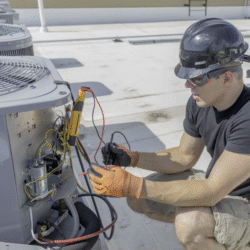Finding the right training method for your dog can be challenging. Busy schedules, inconsistent routines, and behavioral issues can make traditional training at home difficult. That’s where many people wonders and questions themselves that where is board and train dog training near me — a professional, immersive program designed to teach your dog obedience and manners quickly and effectively. Keep reading to discover why these programs are becoming the go-to solution for dog owners.
What Is Board and Train Dog Training?
Board and train programs involve sending your dog to a professional training facility for a set period, typically ranging from one to several weeks. During this time, certified trainers work closely with your dog, teaching commands, correcting behavior issues, and reinforcing positive habits.
Unlike weekly classes at home, board and train programs offer intensive, one-on-one attention, best Dog Grooming, allowing for faster and more consistent learning. By immersing your dog in a structured environment, trainers can address multiple issues simultaneously, from basic obedience to complex behavioral challenges.
The Benefits of Board and Train Programs
- Rapid Results
One of the biggest advantages of board and train programs is speed. Intensive daily sessions allow dogs to learn more in a few weeks than they might in months of traditional classes.
- Consistent Routine
Dogs thrive on consistency, and board and train programs provide a predictable schedule for feeding, exercise, play, and training. This structured environment helps dogs adapt quickly and retain lessons effectively.
- Professional Expertise
Trainers in these programs are experienced in handling dogs of all breeds, ages, and temperaments. They use positive reinforcement techniques, customized behavior plans, and hands-on training strategies to achieve lasting results.
- Socialization Opportunities
Many board and train facilities include supervised interactions with other dogs, helping your pet develop healthy social skills while learning obedience commands.
Who Should Consider Board and Train Programs?
Board and train is ideal for:
- Busy owners who struggle to train at home
- Dogs with behavioral issues such as aggression, anxiety, or excessive barking
- Puppies needing a strong foundation in obedience
- Dogs preparing for advanced skills or competitions
By entrusting your dog to professionals for a short period, you can achieve results that might take months with traditional at-home training.
How It Works
- Assessment: Trainers evaluate your dog’s behavior, temperament, and learning needs.
- Customized Training Plan: A tailored program is created, focusing on obedience, manners, and any specific behavioral challenges.
- Immersive Training: Your dog lives at the facility and participates in multiple daily training sessions, reinforced with positive rewards and consistent routines.
- Owner Involvement: Trainers often provide guidance for the owner to maintain progress at home after the program ends.
This combination ensures that lessons stick, even after your dog returns home.
Types of Board and Train Programs
Basic Obedience Programs
Teach essential commands like sit, stay, come, and heel. Ideal for puppies or adult dogs who need foundational skills.
Advanced Training Programs
Focus on off-leash obedience, impulse control, and more complex behaviors. Suitable for active dogs, competitive obedience, or dogs with previous training experience.
Behavior Modification Programs
Address issues like aggression, separation anxiety, leash pulling, or destructive behaviors. Trainers assess the root cause and implement structured, positive interventions.
Choosing the Right Facility Near You
When searching for board and train dog training near me, consider the following:
- Experience and Credentials: Look for certified trainers with proven results.
- Facility Quality: Clean, safe, and well-supervised environments are essential.
- Training Methods: Positive reinforcement is key; avoid facilities relying on fear or punishment.
- Owner Communication: Updates, photos, or video sessions help you track your dog’s progress.
- Customized Plans: Every dog is different — ensure the program is tailored to your pet’s needs.
Visiting the facility beforehand and asking questions ensures you choose the best environment for your dog.
How to Prepare Your Dog
Before boarding, make sure your dog’s vaccinations are up to date and provide the trainer with any dietary or medical information. Bring familiar items like toys or blankets to help your dog feel comfortable in the new environment.
Preparing your dog and yourself emotionally is equally important. Short goodbyes, rather than prolonged farewells, reduce stress and help your dog adjust faster.
Maintaining Progress After Training
Board and train programs are highly effective, but ongoing reinforcement at home is crucial. Trainers typically provide follow-up instructions, including daily exercises, command practice, and behavior reinforcement strategies.
Consistency and patience ensure that your dog retains lessons learned at the facility, making training a lifelong habit rather than a temporary fix.
Final Thoughts
Board and train dog programs offer a practical, professional solution for busy owners and dogs needing focused training. With expert guidance, structured routines, and personalized attention, these programs can rapidly improve obedience, manners, and social skills.
Investing in a board and train dog training near me program not only saves time but also creates a stronger bond between you and your dog, ensuring long-term happiness and harmony at home.
Frequently Asked Questions
- How long does a typical board and train program last?
Programs usually range from 1 to 8 weeks, depending on your dog’s needs and training goals. - Will my dog stay at the facility the entire time?
Yes. Your dog lives at the training facility, receiving structured training, exercise, and socialization throughout the day. - Can board and train programs address behavioral issues?
Absolutely. Many programs specialize in aggression, anxiety, excessive barking, and other behavioral challenges, using tailored, positive strategies. - How can I maintain training results at home?
Trainers provide guidance and exercises for owners to continue practice at home. Consistency, reinforcement, and routine are essential to maintaining results.


